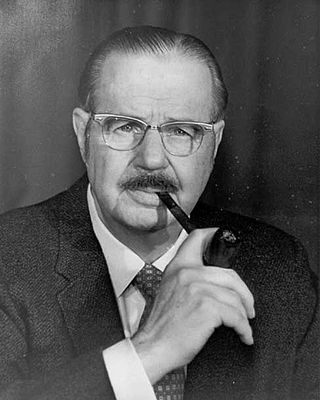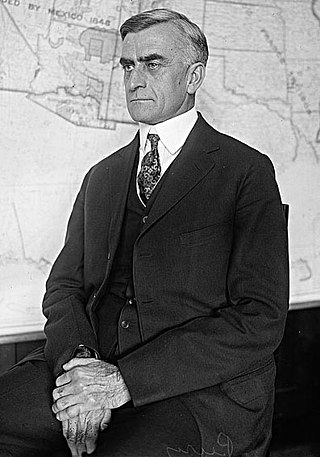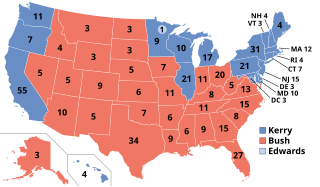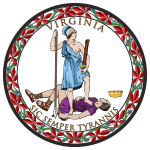
Hugh Doggett Scott Jr. was an American politician. A member of the Republican Party, he represented Pennsylvania in the U.S. House of Representatives from 1941 to 1945 and from 1947 to 1959 and in the U.S. Senate, from 1959 to 1977. He served as Senate Minority Leader from 1969 to 1977.

The 2000 United States House of Representatives elections were held on November 7, 2000, to elect U.S. Representatives to serve in the 107th United States Congress. They coincided with the election of George W. Bush as President of the United States. The Republican Party won 221 seats, while the Democratic Party won 212 and independents won two.

The 1922 United States House of Representatives elections were elections for the United States House of Representatives to elect members to serve in the 68th United States Congress. They were held for the most part on November 7, 1922, though Maine held its on September 11. They occurred in the middle of President Warren G. Harding's term. Just as voters had expressed their distrust of Wilson in 1920, now voters had a chance to express the widespread feeling that Congress had failed to address economic problems, especially the brief but sharp economic recession of 1921–1922. Most of the seats that Republicans lost had long been held by Democrats, who now returned with an even stronger base in the major cities.

George Campbell Peery was an American Democratic politician, and was the 52nd governor of Virginia from 1934 to 1938. He became the second governor to be selected, at least partially, by the soon to be very powerful Byrd Organization, led by Senator Harry F. Byrd, Sr.

Virginia's 10th congressional district is a U.S. congressional district in the Commonwealth of Virginia. It is currently represented by Democrat Jennifer Wexton, who was first elected in 2018.

The 2004 United States elections were held on Tuesday, November 2, 2004, during the early years of the war on terror and after the 2003 invasion of Iraq. Republican President George W. Bush won re-election and Republicans retained control of Congress.

The United States House of Representatives elections in California, 1922 was an election for California's delegation to the United States House of Representatives, which occurred as part of the general election of the House of Representatives on November 7, 1922. The districts were not reapportioned after the 1920 Census, so the state's delegation remained at 11 representatives, and the partisan makeup remained unchanged, at 9 Republicans and 2 Democrats.

The 2000 United States House of Representatives elections in Virginia were held on November 7, 2000 to determine who will represent the Commonwealth of Virginia in the United States House of Representatives. Virginia has eleven seats in the House, apportioned according to the 1990 United States Census. Representatives are elected for two-year terms.

The 1944 United States House of Representatives elections in Virginia were held on November 7, 1944 to determine who will represent the Commonwealth of Virginia in the United States House of Representatives. Virginia had nine seats in the House, apportioned according to the 1940 United States Census. Representatives are elected for two-year terms.

The 1950 United States House of Representatives elections in Virginia were held on November 7, 1950 to determine who will represent the Commonwealth of Virginia in the United States House of Representatives. Virginia had nine seats in the House, apportioned according to the 1940 United States Census. Representatives are elected for two-year terms.

The 1922 United States elections were held on November 7, 1922. The election took place during Republican President Warren G. Harding's term. The Republican Party lost seats in both chambers of Congress, but retained their majority in the House and Senate. In the House, the Republicans lost seventy-seven seats to the Democratic Party. The Republicans also lost seven seats in the U.S. Senate, six to the Democrats and one to the Minnesota Farmer–Labor Party.

The 2004 United States House of Representatives elections in Virginia were held on November 2, 2004 to determine who will represent the Commonwealth of Virginia in the United States House of Representatives. Virginia has eleven seats in the House, apportioned according to the 2000 United States Census. Representatives are elected for two-year terms.

The 1978 United States House of Representatives elections in Virginia were held on November 7, 1978 to determine who will represent the Commonwealth of Virginia in the United States House of Representatives. Virginia had ten seats in the House, apportioned according to the 1970 United States Census. Representatives are elected for two-year terms.

The 1972 United States House of Representatives elections in Virginia were held on November 7, 1972 to determine who will represent the Commonwealth of Virginia in the United States House of Representatives. Virginia had ten seats in the House, apportioned according to the 1970 United States Census. Representatives are elected for two-year terms.

The 1922 United States Senate election in Montana took place on November 7, 1922. Incumbent United States Senator Henry L. Myers, who was first elected to the Senate in 1910, and was re-elected in 1916, declined to seek re-election. Former United States Attorney Burton K. Wheeler won the Democratic primary and advanced to the general election, where he faced Carl W. Riddick, the United States Congressman from Montana's 2nd congressional district and the Republican nominee. Ultimately, Wheeler defeated Riddick comfortably and won his first term in the Senate.

The 1922 United States Senate election in Virginia was held on November 7, 1922. Incumbent Senator Claude A. Swanson was re-elected to a third term after defeating Republican J. W. McGavock. Swanson and fellow Senator Carter Glass were the first U.S. Senators to be elected by popular vote following the passage of the 17th Amendment.

The 1940 United States House of Representatives elections in Virginia were held on November 5, 1940 to determine who will represent the Commonwealth of Virginia in the United States House of Representatives. Virginia had nine seats in the House, apportioned according to the 1930 United States Census. Representatives are elected for two-year terms.

The 1922 United States Senate election in Ohio took place on November 7, 1922. Incumbent Democratic Senator Atlee Pomerene ran for re-election to a third term in office, but was defeated by Republican U.S. Representative Simeon Fess.

The 1922 United States Senate special election in Iowa took place on November 7, 1922. Republican Smith W. Brookhart was elected to complete the unexpired term of William S. Kenyon, defeating Democrat Clyde Herring.












